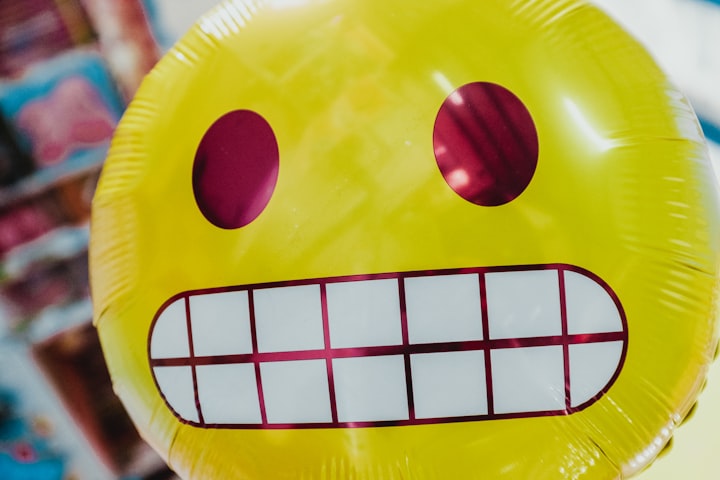How to Build a Good Remote Work Culture
Remote work is the new industry standard. With the right culture, it can be even better than traditional office work.

The Coronavirus pandemic made remote work the industry standard. Although people had predicted the trend beforehand, the pandemic itself accelerated the transition. As a result, the bulk of the industry faced an abrupt transition to remote work. We now see most companies struggling to adjust.
This is a hidden blessing. The pandemic became a forcing function for companies to adapt, but change isn't always bad. If handled well, remote work is superior to its in-office counterpart. Companies that learn to thrive off remote work gain a competitive edge and become a better place to work. The companies that fail to adapt will suffer. (In that case, you'd better hope the pandemic ends soon.)
I've gathered 3 fundamental principles of remote work that most companies neglect. Adopting these makes remote work an enjoyable and productive experience.
Async as the Default ⏳
As a remote team, all work should happen asynchronously by default. Most of the real work gets done when you're alone and focused. That also means most communication with teammates should be asynchronous as well.
Adjust your Mindset
Imagine a stereotypical office space. People are happy, laughing, and working together. Serendipity floods the air. Now take a step back and think about what's really happening. The harsh truth behind this scene is that people are just socializing.
We like to romanticize the fantasy of happy people working side-by-side in an office. To be fair, it's understandable; we're social creatures. But when it comes to being productive in reality, what seems fun doesn't always work.

Several months ago, I conversed with a startup founder who disallowed remote work. He wanted the team together, despite Coronavirus risks. I expressed my doubts over his cost-benefit analysis, so he shared his opinion on remote work. He claimed that working in the office would be strictly more productive due to serendipity.
I disagree completely. Remote workers have the opportunity to focus without the distractions of the office. You can still budget for serendipity, but too much of it becomes a distraction. Make use of the new opportunity. It's a chance to do your best work without being held back.
Communicate Efficiently
Focused deep work is the bread and butter of the remote workplace. You must protect it at all costs. The best way to do this is to minimize context switching. There are several tactics you can adopt in your daily life.
The first step is to change the way people communicate. For example, most meetings shouldn't exist. Ask yourself: could this meeting happen over Slack? If so, remove the meeting. In a similar vein, notice if you're repeating the same conversations in Slack over and over again. It may be a sign that you should be writing documentation for the team instead. Choose the least synchronous method of communication for every situation. Encourage your teammates to do the same.

Set Core Hours
In the past few years, the concept of Make Time gained traction within Silicon Valley. You'd block some time off your calendar each day for heads down work. The expectation was that others would not schedule meetings during that time. And it works. But we should take it a step further.
Instead of Make Time, set "Core Hours" every day. These are the hours when others can expect you to take meetings. This of these as office hours. All other hours default to heads down time. This habit gains a few added benefits over Make Time. People have to schedule meetings efficiently, and you also foster respect across timezones. There's no more guessing about working hours or crossing boundaries.

Convey Urgency
The most important change is to separate urgent and non-urgent communications. You want to have separate systems for dealing with the two. Being "interrupt-driven" is the worst thing that can happen with your workflow. Your attention is your most valuable resource.
The urgency of a message must always be clear. I like to mention the urgency of a discussion what talking to teammates. That way, it's safe to assume that something is low urgency unless otherwise stated. Some people like to disable notifications when focusing. If a message is urgent, their peers can manually trigger a notification. There are many protocols a team can adopt to convey urgency. Your exact scheme doesn't matter, but you must establish some sort of protocol.
Productive Meetings 🤝
Companies struggle to hold productive meetings. Most meetings turn into blocks of time where people can't get work done. A majority of meetings should not exist in the first place. However, some meetings still need to happen. For those meetings, it's important to make sure they're effective.
Consider making the following mechanical changes to your meetings:
- Meetings should be short. Anything over half an hour isn't likely to be a productive use of time.
- Prefer to schedule meetings back-to-back to reduce the overhead of context switching. Google Calendar users can enable the "speedy meetings" feature to lower meeting durations. That way, there can get a few minutes between back-to-back meetings to take a break.
- Think twice about who must attend meetings. Try to mark everybody on a calendar invite as an optional attendee. Be conservative with whom you mark as mandatory.

Leave Meetings Early
Meeting culture should change as well. There's a taboo around not being fully present during a meeting. I'd like to take a different stance on that viewpoint. If people get bored or zone out during a meeting, the meeting is not a good use of their time. There's nothing wrong with that.
In such a case, it's best to leave the meeting. Build a culture where leaving meetings early is socially acceptable (or even encouraged). It stops people from wasting their time. We tend to associate being in meetings as doing real work. It's time to break that habit.
Most meetings seem to run late, but I suspect that productive meetings end early in practice. A meeting does not need to expand to its allocated time slot. Don't spend any extra time on topics that can be addressed asynchronously. It only builds bad habits. When there's nothing good to discuss, the team should end the meeting.
Prepare for Meetings
Every meeting needs an owner, an agenda, and a purpose. The purpose of meetings should be limited to discussions and decision-making. Meetings should not be a time to give updates or brainstorm. Those are best done over a different medium.
The meeting's owner takes responsibility for setting a clear agenda for the meeting. The agenda includes context, problems, and action items. Expect all attendees to know the agenda and prepare before a meeting starts. If a meeting meets all these criteria, the moment it begins, everyone should be on the same page. The team wastes no time and can immediately get into the "meat" of the discussion. By the end of a meeting, the action items for each individual should be clear.
Knowing your Teammates 🤼
Remote work has its own unique challenges. There's no forcing function to get you to know your teammates. You may never meet your teammates in person, but you'll work with them a lot. And while serendipity isn't everything, we still want to keep some in the workplace. For these reasons, you must be intentional about taking the time to know your teammates.
Spending time to know your team beats the serendipity of working together in person. Even if two people work in the same office, they may never have a deep conversation. Or worse, they may form their own bubbles with the same people. How is that serendipitous?
Meeting with your teammates will happen over video. These meetings should stay synchronous. There are two ways to approach these teammate chats: as part of a group or one-on-one. I recommend doing both.
Casual Group Chats
Holding "water cooler" sessions is an easy but effective way to know how everybody's doing. Every week or so, the team holds a meeting. Attendance is always optional but encouraged. The team members share how life is going and talk about how the week went. There's only one rule for these meetings: no talking about work.
Water cooler chats give the opportunity to share your personal life and learn about the lives of your teammates. It a time to express who you are, when it's usually taboo to talk about your life at work. I recommend placing these chats either near the beginning or end of the week. That way, it minimizes context switching. Additionally, it'll be a nice way to start off the week or wind down for the weekend.
As the company scales, the mechanics of a water cooler chat changes. For a 10-person startup, you can host a single meeting with the entire company. But as the size of a group grows, it becomes harder to hold multiple conversations over video. It's also easy for shy people not to have an opportunity to speak.
If the team gets too large, you need to split up water cooler sessions. For example, you can create two concurrent meetings with different groups of people. Be sure to randomize who attends each session. That way, your teammates are always meeting new people. The optimal size for a group chat over video is approximately 4 people. Any more, and people start to get left out. Any less, and it's no longer a group.

Casual 1:1's
You should be proactive with scheduling recurring 1:1's with your coworkers. Like the group chats, these are not for talking about work. The purpose is to know your teammate as a person. The cadence of these meetings doesn't have to be frequent, since there are many people to meet.
The mechanics of these 1:1's also change depending on your company size. In a small startup, it's possible to schedule time with every single person. Every two or three weeks, you invest half an hour.
In a larger company, bias towards meeting your immediate teammates first. But be sure to make time to talk to people you wouldn't normally work with. This applies especially for people in different job roles. The engineer who can empathize with sales has a lot more context on the company and delivers more value. It's okay to talk to people outside your team with low frequency, but be sure the frequency is non-zero.
Getting to know your teammates should lead to plenty of serendipity and fulfillment. If done correctly, you should know your coworkers rather well, even if you've never met them in person. The people are the most important part of a company. Invest in them.
Most of us struggle with remote work.
— Andrew Liu (@liuandrewk) February 15, 2021
- We use inefficient communication.
- Meetings tend to waste time.
- Our teammates have become more distant.
The truth is that we have to tackle the bad habits before we can expect real change.https://t.co/Q1MremDMBr
Any tips I missed? Do you prefer remote work or in-person work? Share your thoughts in the Twitter post above, and don't forget to subscribe!



Comments ()